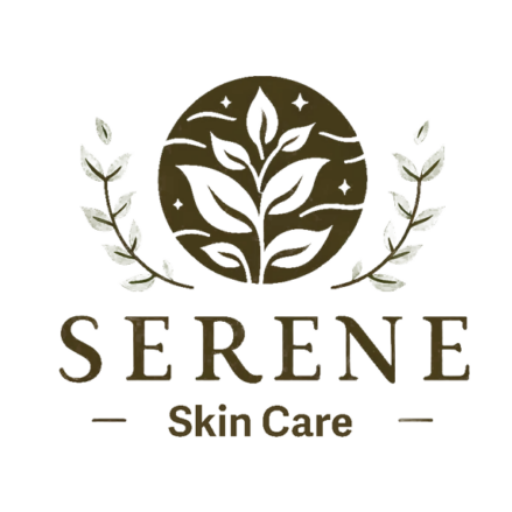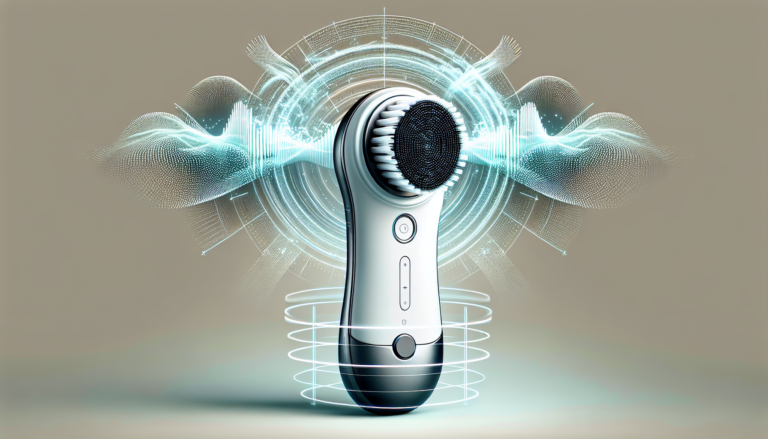In the digital age, our lives are intertwined with screens, from smartphones to laptops. As we spend more time immersed in technology, a new concern has arisen: the effects of blue light on our skin. With the rise of artificial lighting and electronic devices, many are curious about the potential impacts on our complexion. This article explores the relationship between blue light exposure and skin health, shedding light on the latest research and offering practical tips for maintaining a healthy, radiant complexion in this digital era.
What is blue light?
Blue light refers to a specific wavelength of light on the visible light spectrum. It is a high-energy, short wavelength light that is emitted by various sources, including the sun, digital devices such as smartphones, tablets, and computers, and artificial lighting such as LED lights. Blue light has the shortest wavelength and the highest energy compared to other colors on the visible light spectrum.
Definition and sources of blue light
Blue light has a wavelength between approximately 380 and 500 nanometers (nm). It falls in the range of high-energy visible (HEV) light. Natural sources of blue light include sunlight, which is a combination of different wavelengths of light, including blue light. Artificial sources of blue light include electronic devices with LED screens, fluorescent lights, and modern energy-efficient light bulbs.
The different wavelengths of blue light
Blue light can be further categorized into different wavelength ranges. Blue-turquoise light, with a wavelength of approximately 465 nm, is responsible for regulating various physiological processes such as melatonin production, circadian rhythm, and mood. Violet-blue light, with a wavelength of around 415 nm, has a higher energy level and is more likely to cause damage to the skin.
Common sources of blue light exposure
The primary sources of blue light exposure in today’s digital age are electronic devices such as smartphones, tablets, and computers. People spend significant amounts of time in front of screens for work, leisure, and social interactions. Additionally, LED lights used in indoor and outdoor lighting, including streetlights and car headlights, emit blue light. Prolonged exposure to these sources can have adverse effects on the skin.
How does blue light affect the skin?
Blue light’s impact on the skin’s barrier function
Research suggests that exposure to blue light can compromise the skin’s barrier function. Blue light can penetrate the skin deeper than UVA and UVB rays, potentially leading to oxidative stress and inflammation in the deeper layers of the skin. This can disrupt the skin’s protective barrier, resulting in increased transepidermal water loss and decreased skin hydration.
The production of reactive oxygen species (ROS)
Blue light exposure has been found to stimulate the production of reactive oxygen species (ROS) in skin cells. ROS are unstable molecules that can cause damage to cellular structures, including DNA, proteins, and lipids. This oxidative stress can contribute to premature aging, skin damage, and the development of certain skin conditions.
Increased inflammation and oxidative stress
Blue light exposure has been shown to increase inflammation in the skin. It activates immune cells called mast cells, which release inflammatory mediators that can harm the skin’s structure and function. Chronic inflammation and oxidative stress can lead to collagen and elastin degradation, impaired healing, and the formation of wrinkles, fine lines, and sagging skin.
Effects on collagen and elastin fibers
Studies indicate that blue light can negatively affect collagen and elastin fibers, which are vital for maintaining the skin’s strength and elasticity. Blue light exposure has been shown to disrupt collagen production, leading to the breakdown of collagen fibers and the weakening of the skin’s structural support. This can contribute to the development of wrinkles and loss of skin firmness.
Hyperpigmentation and melasma
Blue light exposure has also been associated with an increased risk of hyperpigmentation and melasma. Blue light can stimulate the production of melanin, the pigment responsible for skin color. Excessive melanin production can lead to the development of dark spots, uneven skin tone, and melasma patches, especially in individuals with a predisposition to these conditions.
Skin aging and premature wrinkles
Multiple studies suggest that prolonged exposure to blue light may accelerate skin aging and the onset of premature wrinkles. The combination of oxidative stress, inflammation, collagen degradation, and disruption of the skin’s natural defense mechanisms can result in the premature appearance of fine lines, wrinkles, and other signs of aging.
The role of digital devices in blue light exposure
Use of smartphones, tablets, and computers
In today’s digital world, the use of smartphones, tablets, and computers is prevalent. These devices emit blue light and are often held close to the face during prolonged use. Consequently, the skin on the face and neck may be more susceptible to the damaging effects of blue light.
Time spent in front of screens
With the increasing reliance on digital technology for work, entertainment, and communication, people spend significant amounts of time in front of screens. Whether it’s for work or leisure, prolonged screen time increases blue light exposure and the potential impact on the skin.
Blue light emitted by LED screens
LED screens, commonly found in electronic devices such as smartphones, tablets, and computers, emit significant amounts of blue light. LED technology is energy-efficient and widely used, making it a major source of blue light exposure. The close proximity of these devices to the face further increases the potential damage to the skin.
Skincare products and blue light protection
Ingredients that can help combat blue light damage
The skincare industry has been quick to react to the emerging concerns regarding blue light. Some skincare products now contain ingredients that claim to protect the skin against blue light damage. These ingredients may include antioxidants, peptides, and natural extracts that have been shown to have protective and reparative effects on the skin.
Antioxidants and their role in protecting the skin
Antioxidants play a crucial role in protecting the skin from the harmful effects of blue light. They help neutralize ROS, reducing oxidative stress and inflammation in the skin. Common antioxidants used in skincare products include vitamins C and E, niacinamide, green tea extracts, and resveratrol. These ingredients can help counteract the damaging effects of blue light and support overall skin health.
SPF and blue light defense
Although sunscreen is primarily designed to protect the skin from UVA and UVB rays, some studies suggest that certain sunscreens with high SPF values may offer some level of blue light protection as well. However, more research is needed to determine the effectiveness of sunscreen alone in shielding the skin from the full spectrum of blue light.
The evolving market for blue light skincare products
The increasing awareness of blue light’s potential impact on the skin has led to a growing market for skincare products specifically formulated to protect against blue light damage. From moisturizers to serums and even makeup products, the industry is adopting innovative approaches to develop effective blue light protection solutions. However, it is important for consumers to be mindful of marketing claims and to look for products with scientifically supported ingredients.
Healthy habits for minimizing blue light exposure
Reducing screen time and taking breaks
One of the most effective ways to reduce blue light exposure is by minimizing screen time and taking regular breaks from electronic devices. Timely breaks allow the skin and eyes to rest and recover from the potential damage caused by blue light. Engaging in alternative activities that do not involve screens, such as outdoor exercise or reading a physical book, can also help reduce exposure.
Blue light filters and screen protectors
Several electronic devices and operating systems now offer built-in blue light filters or night mode settings that can reduce the amount of blue light emitted. Additionally, screen protectors with blue light filters are available for smartphones, tablets, and computer screens. These filters can help reduce blue light transmission and its potential impact on the skin.
Adjusting screen brightness and color temperature
Lowering the screen brightness and adjusting the color temperature settings on electronic devices can be beneficial in reducing blue light exposure. Dimming the screen brightness and choosing warmer color temperatures, such as “night mode” settings, can minimize the amount of blue light emitted.
Wearing blue light-blocking glasses
Blue light-blocking glasses are becoming increasingly popular as a way to protect the eyes and skin from the harmful effects of blue light. These glasses have lenses that filter out a portion of blue light, reducing the potential damage to the eyes and the surrounding skin. Wearing blue light-blocking glasses, especially during prolonged screen time, can help minimize the impact of blue light on the skin.
The impact of blue light on sleep
Blue light’s effect on melatonin production
Blue light exposure, particularly in the evening and at night, can suppress the production of melatonin, a hormone that helps regulate sleep-wake cycles. The blue light emitted by electronic devices can interfere with the body’s natural circadian rhythm, making it harder to fall asleep and get quality rest.
Disruption of circadian rhythm
Blue light exposure before bedtime can disrupt the body’s circadian rhythm, the internal process that regulates sleep-wake cycles and other physiological functions. The body interprets blue light as a signal to stay awake, leading to difficulty falling asleep, poor sleep quality, and potential sleep disorders.
Strategies to reduce blue light exposure before bedtime
To minimize the impact of blue light on sleep, individuals can adopt several strategies. These include avoiding screen use at least one hour before bedtime, using blue light filters on electronic devices, and switching to warmer lighting options in the evening. Establishing a calming bedtime routine and creating a sleep-friendly environment can also promote better sleep in the presence of blue light exposure.
Studies on the effects of blue light on the skin
Scientific research and findings
Scientific research on the effects of blue light on the skin is still in its early stages. However, several studies have shed light on the potential impact of blue light on skin health. Researchers have investigated various aspects, including oxidative stress, inflammation, collagen degradation, and melanin production. While the findings are promising, more research is needed to fully understand the long-term effects of blue light exposure on the skin.
Studies on both in vivo and in vitro models
Studies on the effects of blue light exposure on the skin have been conducted using both in vivo (living organisms) and in vitro (cell cultures) models. In vivo studies involving human participants have helped identify potential changes in the skin’s structure, while in vitro studies allow for controlled experiments to investigate specific cellular responses to blue light. Combining data from both types of studies provides valuable insights into the effects of blue light on the skin.
The limitations of current research
It is important to recognize the limitations of current research on blue light’s effects on the skin. Many studies have been conducted in laboratory settings, and the extrapolation of these findings to real-life scenarios may not always be straightforward. Additionally, there is a need for more long-term studies and larger sample sizes to confirm the findings and establish definitive conclusions regarding the impact of blue light on skin health.
Blue light skincare myths and misconceptions
Debunking common misconceptions
There are several common misconceptions surrounding blue light and its effects on the skin. One of the most commonly misunderstood aspects is the belief that blue light is solely harmful. While prolonged and intense exposure to blue light can have detrimental effects, there is also evidence to suggest that controlled exposure to certain wavelengths of blue light may have positive therapeutic effects on certain skin conditions.
Separating facts from marketing hype
With the rise in consumer interest in blue light protection, it is important to separate scientific facts from marketing hype. Many skincare products claim to offer complete protection against blue light damage, but the efficacy of these claims may vary. It is essential for consumers to look for products with scientifically proven ingredients and to rely on reputable sources of information when making decisions about blue light protection.
The future of blue light skincare
Advancements in blue light protection technology
As awareness of blue light’s potential impact on the skin grows, there is an increasing focus on developing more advanced solutions for blue light protection. The skincare industry is investing in research and development to identify novel ingredients, technologies, and formulations that can offer effective defense against blue light damage.
Innovative skincare formulations and ingredients
Skincare brands are continuously exploring innovative formulations and ingredients that can help combat the harmful effects of blue light. This includes ingredients with antioxidant properties, anti-inflammatory agents, and novel light-scattering particles to shield the skin from blue light exposure. As technology advances, skincare formulations will integrate these ingredients to provide comprehensive blue light protection.
The importance of ongoing research
Ongoing research is crucial for a better understanding of blue light’s effects on the skin and the development of effective protective strategies. Continual studies can help identify optimal concentrations of active ingredients, evaluate the long-term effects of blue light exposure, and refine product formulations. The scientific community, skincare industry, and consumers all play critical roles in supporting and benefiting from future research.
Conclusion
In the digital age, where blue light exposure is a constant presence in our lives, understanding its effects on the skin is essential. Blue light exposure can impact the skin’s barrier function, promote the production of reactive oxygen species, increase inflammation and oxidative stress, affect collagen and elastin fibers, contribute to hyperpigmentation and melasma, and accelerate skin aging and the formation of premature wrinkles. However, with the right skincare products and healthy habits, individuals can mitigate the potential damage caused by blue light. As research continues to evolve, the skincare industry is striving to develop more advanced solutions that offer effective blue light protection. By staying informed, using scientifically proven products, and adopting mindful habits, individuals can navigate the digital world while safeguarding their skin from the potential harm of blue light exposure.


